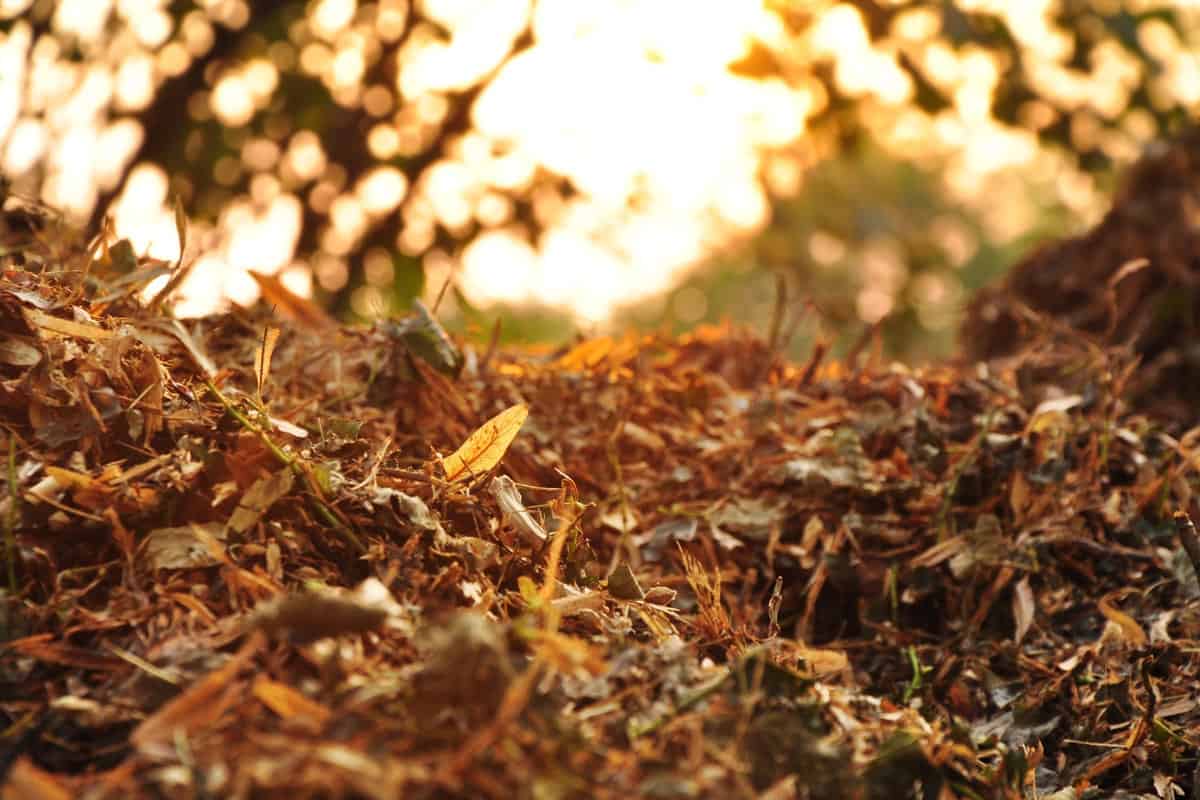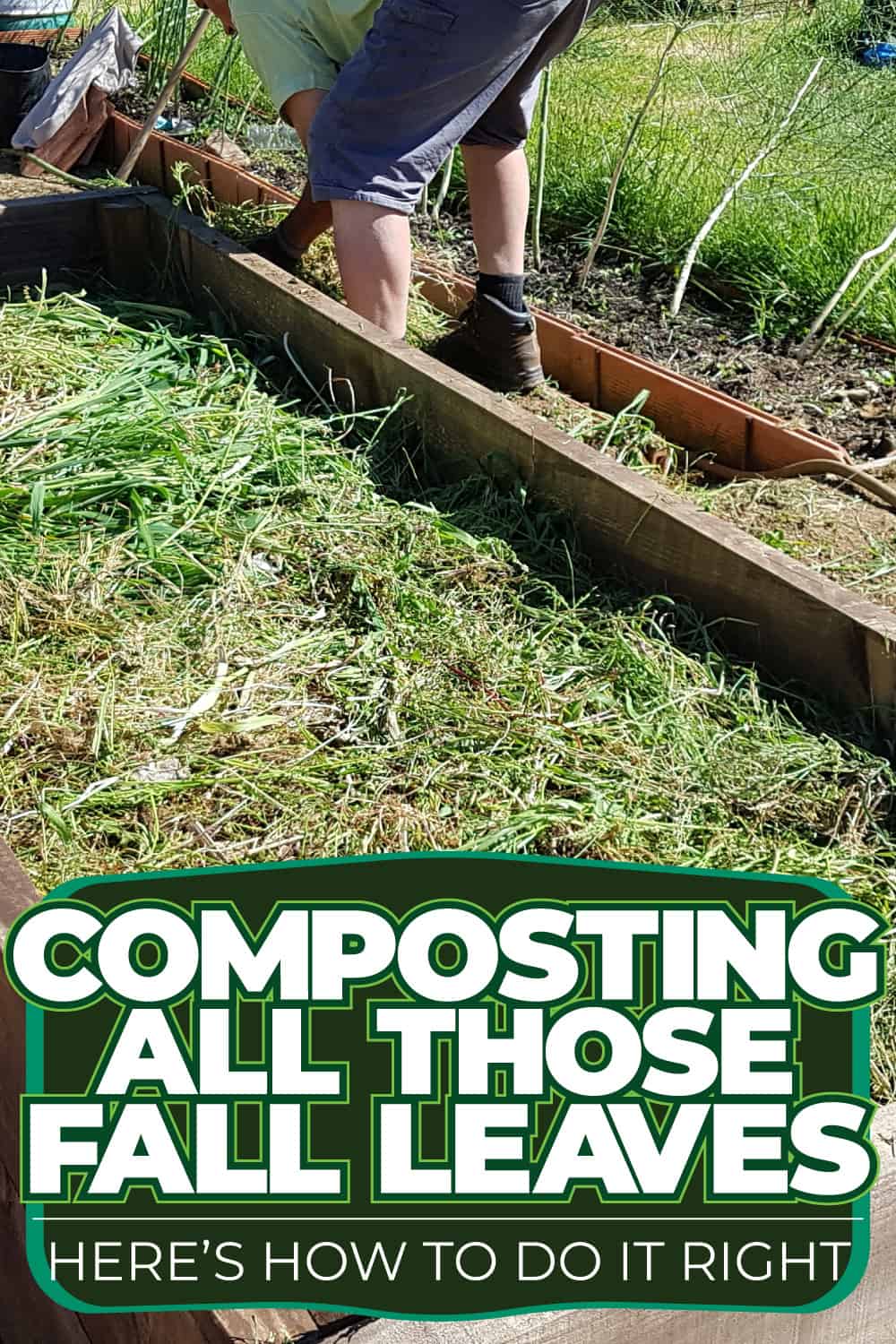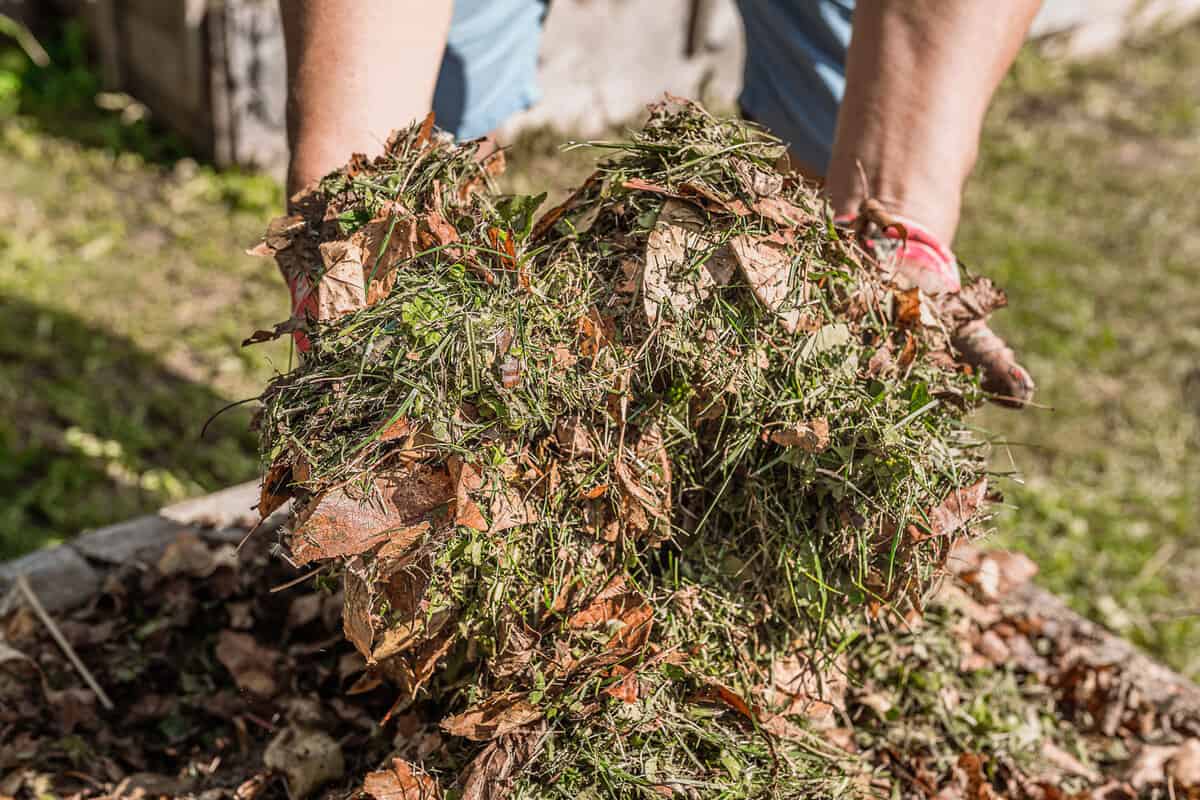As the fall season approaches, there's no doubt that you'll soon be surrounded by a colorful bounty of leaves blanketing your lawn and garden.
While it might be tempting to simply rake them up and dispose of them, composting those fall leaves is a much more eco-friendly and beneficial way to put them to good use.

Composting leaves not only helps to recycle valuable nutrients back into your soil but also contributes to reducing waste in landfills.
Plus, it's an ideal method for any gardener, regardless of your skill level or experience.
To help you jump into composting this season, we'll be sharing some tips and tricks on how to do it right.
From choosing the right mix of materials to finding the perfect composting method for your needs, by the end of this article, you'll be well-equipped to turn those fall leaves into beautiful, rich compost in no time.

What Is Composting?
Composting is a natural process that turns organic material, such as leaves and kitchen scraps, into a nutrient-rich substance called humus.
When you compost your fall leaves, you're essentially speeding up the decay process and creating a valuable soil amendment.
This process involves layering brown materials (like leaves and pine needles) and green materials (like grass clippings and vegetable scraps) to create a compost pile.
To ensure the success of your compost pile, be sure to:
Turn
Regularly turning your compost pile helps to maintain oxygen levels and boosts the decomposition process.
Maintain Moisture
A properly moistened compost pile promotes decay and reduces odors. If your pile seems too dry, add water while turning the materials.
Balance
Aim for a balance between the green and brown materials in your compost pile. This will help your compost decompose at a faster rate.
Importance of Composting Fall Leaves
Composting fall leaves provides several benefits for both your garden and the environment. Some of these benefits include:
Improving Soil Quality
Composting enriches your garden soil with essential nutrients and improves its structure, helping plants grow healthier and stronger.
Waste Reduction
By composting your fall leaves, you're reducing the amount of organic waste that ends up in landfills.
Environmental Benefits
Composting fall leaves helps to reduce methane emissions, a potent greenhouse gas, and lowers your carbon footprint.
Mulching
Using leaf compost as mulch can help insulate plant roots, suppress weeds, and retain soil moisture.
Preparation for Composting
Here are some general tips to prepare your leaves for composting.
Selection of Best Fall Leaves
When preparing for composting, it's important to choose the right types of fallen leaves.
Some leaves decompose more easily than others, contributing valuable nutrients to your compost pile.

For instance, deciduous trees like maple, oak, and beech typically have excellent leaves for composting.
However, avoid using leaves from black walnut trees, as they contain a substance called juglone that can inhibit plant growth.
As you collect your leaves, try to ensure they're free of pests, diseases, and mold.
Mixing several types of leaves creates a balanced compost pile and supports a diverse microbial community, which is essential for breaking down organic materials.
Equipment Required
Before you begin composting, gather the necessary tools to make the process smoother and more efficient. Below are some of the recommended equipment:
1. Rake
To collect and pile up leaves, a good rake is essential. Find one with sturdy tines and a comfortable grip.
2. Gloves
Gloves protect your hands from sharp twigs and potential irritants in the leaves, preventing scratches, blisters, and allergic reactions.
3. Compost Bin or Enclosure
A bin or enclosure helps keep the compost pile contained and tidy. You can build your own or purchase a ready-made compost bin.
4. Shredder or Mower
Shredding leaves speeds up their decomposition process. You can use a dedicated leaf shredder or simply run a lawnmower over the pile to achieve this.
5. Pitchfork or Garden Fork
This tool is useful for turning and aerating the compost pile, promoting an oxygen-rich environment for efficient decomposition.
6. Watering Can or Hose
Compost piles need proper moisture for the decomposition process to occur. A watering can or hose allows you to evenly distribute water throughout the pile.
Composting Process
When all your equipment is ready, here's how to start your composting process.
Starting Your Pile
To begin composting, find a suitable location in your yard and gather your fall leaves to start the process.
Be sure to include a mix of green and brown materials, like leaves and grass clippings, as they provide the necessary balance of carbon and nitrogen for healthy decomposition.
You can use a compost bin or simply create a pile on the ground. Start with a layer of brown materials, such as leaves or straw, then add a layer of green materials like grass clippings or food scraps.
Keep the layers about 2-4 inches thick and alternate between green and brown materials in the pile.
Maintaining Your Pile
Keep your compost pile moist by watering as needed and turning it regularly to aerate and mix the materials. This ensures proper decomposition and avoids unpleasant odors.
To check the moisture level, do a squeeze test by grabbing a handful of composting materials.
If one or two drops of water can be squeezed out, the moisture level is ideal.
Natural Elements in the Process
Composting is a natural process involving earthworms, microorganisms, and fungi that break down organic materials into nutrient-rich compost to be used in your garden or yard.
Remember to be patient, as the composting process can take anywhere from a few weeks to several months, depending on the materials you use and the environmental conditions.
When and How to Use Compost
Composting your fall leaves helps to recycle nutrients back into your garden. Once your leaf compost is ready, you can use it in various ways.
Apply a 1-2 inch layer of compost around the base of your plants, trees, and shrubs to act as a mulch.
This will help retain soil moisture, suppress weeds, and regulate soil temperatures during the growing season.
In addition to using compost as mulch, you can mix it into your garden beds before planting.
Doing this will provide valuable nutrients to your plants and improve soil structure.
When preparing new beds or amending existing ones, mix the compost with the top 6-8 inches of soil to provide a nutrient-rich environment for your plants.
Don't forget about your potted plants and containers! Adding compost to your potting soil mix can supply essential nutrients and help retain moisture in your containers.
Misconceptions About Compost Usage
Some gardeners think compost can only be used as an amendment during the spring or summer, but that's not entirely true.
While the composting process slows down in colder temperatures, it doesn't stop completely.
In fact, your compost pile can continue to decompose over the winter months when temperatures are above 50°F.
Another misconception is that compost is a fertilizer replacement.
Although compost provides valuable nutrients and organic matter to your soil, it doesn't contain the same levels of concentrated nutrients as commercial fertilizers.
Think of compost as a soil conditioner, improving the overall health and structure of your garden, rather than relying on it solely for nutrient supply.
Common Problems in Composting
One issue you might face during composting is slow decomposition. This can be caused by a lack of nitrogen-rich materials or poor aeration in the pile.
If your compost pile starts to emit a foul odor, this could be due to excessive moisture or a lack of oxygen.
Lastly, if you notice that your compost attracts pests like rodents or insects, it could be due to the presence of meat or dairy products in the compost.
Solutions and Fixes
To speed up the decomposition process, ensure you have a good balance of green (nitrogen-rich) and brown (carbon-rich) materials.
You can add grass clippings or coffee grounds to increase nitrogen levels.
Aerating your compost is essential for efficient decomposition. Turn your pile regularly to ensure proper oxygen flow.
If your compost becomes too wet, add brown materials like leaves or straw to absorb the excess moisture.
University of Maryland Extension suggests that you can also create compost tea by steeping compost in water for 1-3 days, which can be applied to plants directly.
If your compost pile begins to smell, this might be an indication that it needs more air. Turn the pile more frequently to improve aeration.
Avoid adding meat, dairy products, or any other material that might attract pests to your compost pile.
If pests continue to be a problem, consider using a closed compost bin or creating an enclosure around your pile to keep unwanted visitors at bay.
Knowledge and Patience is Key to Successful Composting
As you continue your composting journey, remember that utilizing those fall leaves is an excellent way to enrich your compost pile.
By following a few simple steps, you can make the most of this abundant resource and create nutrient-rich compost for your garden.
Be patient and let nature do its work. Your finished compost should be ready in approximately 4-6 weeks, although it might take a bit longer during the winter months.
Once it's completed, your rich, homemade compost will be perfect for incorporating into your garden beds and providing essential nutrients for your plants.
For more composting tips, read here:
